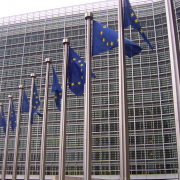The Food and Agriculture Organization (FAO) on Monday launched the United Nations’ International Year of Plant Health (IYPH) for 2020, which aims to raise global awareness on how protecting plant health can help end hunger, reduce poverty, protect the environment, and boost economic development.
Plants make up 80 percent of the food we eat, and produce 98 percent of the oxygen we breathe. Yet, they are under constant and increasing threat from pests and diseases.
Every year, up to 40 percent of global food crops are lost to plant pests and diseases. This leads to annual agricultural trade losses of over $220 billion, leaves millions of people facing hunger, and severely damages agriculture – the primary income source for poor rural communities.
This is why policies and actions to promote plant health are fundamental for reaching the Sustainable Development Goals.
“Plants provide the core basis for life on Earth and they are the single most important pillar of human nutrition. But healthy plants are not something that we can take for granted,” said FAO Director-General Qu Dongyu who launched the Year on the sidelines of the UN agency’s Council meeting.
Climate change and human activities are altering ecosystems, reducing biodiversity and creating conditions where pests can thrive. At the same time, international travel and trade has tripled in volume in the last decade and can quickly spread pests and diseases around the world causing great damage to native plants and the environment.
“As with human or animal health, prevention in plant health is better than cure,” stressed the FAO chief.
Protecting plants from pests and diseases is far more cost effective than dealing with full-blown plant health emergencies. Plant pests and diseases are often impossible to eradicate once they have established themselves and managing them is time consuming and expensive.
Qu Dongyu also urged for prompt action, pointing out that much still needs to be done to ensure plant health.
“On this International Year and throughout this Decade of Action to deliver the Sustainable Development Goals, let us dedicate the necessary resources and increase our commitment to plant health. Let us act for people and planet,” said António Guterres, UN Secretary-General in a message read out at the event.
The following ministers also spoke at the event: Edward Centeno Gadea, Minister of Agriculture and Livestock, Nicaragua; Andrew Doyle, Minister of State at the Department of Agriculture, Food and the Marine, Ireland; Jaana Husu-Kallio, Permanent Secretary of the Ministry of Agriculture and Forestry, Finland; and Tamara Finkelstein, Permanent Secretary of Department for Environment, Food and Rural Affairs, UK.
In his opening remarks, the FAO Director-General Qu Dongyu commended the Government of Finland for taking the lead in proposing a year dedicated to plant health and coordinating efforts to have the year declared.
What will the International Year of Plant Health do?
FAO and its International Plant Protection Convention (IPPC) will lead activities to make the Year a success as well as promote plant health beyond 2020.
The Year will emphasize prevention and protection, and the role everyone can play to ensure and promote plant health.
The key objectives of the Year are: raising awareness of the importance of healthy plants for achieving the 2030 Agenda for Sustainable Development; highlighting the impact of plant health on food security and ecosystem functions; and sharing best practices on how to keep plants healthy while protecting the environment.
By preventing the spread and introduction of pests into new areas, governments, farmers and other actors of the food chain, such as the private sector, can save billions of dollars and ensure access to quality food.
Keeping plants or plant products free from pests and diseases also helps facilitate trade and ensures market access especially for developing countries. For this, it is important to strengthen the adherence to harmonized international phytosanitary regulations and standards.
When combatting pests and diseases, farmers should adopt, and policymakers should encourage the use of, environmentally friendly methods such as integrated pest management to help keep plants healthy whilst protecting the environment.
Governments, legislators and policymakers should empower plant protection organizations and other relevant institutions, and provide them with adequate human and financial resources. They should also invest more in plant-health related research and outreach, as well as innovative practices and technologies.
Strategic partnerships and collaborative action with all stakeholders, including governments, academia and research institutions, civil society and private sector, are also essential to achieve the objectives of the International Year of Plant Health, noted the FAO Director-General.
FAO and its International Plant Protection Convention are already leading global efforts, for example, to ensure that International Standards for Phytosanitary Measures are developed to sustain plant health and countries benefit from their wide application.
In the case of Fall Armyworm – a fast spreading, crop-munching pest – FAO has been coordinating global efforts to manage the pest and curb its spread by developing and promoting innovative technologies for monitoring and early warning, and equipping governments and farmers with the best tools and knowledge to fight the pest.
Other initiatives to put plant health in the spotlight
The launch of the Year was followed by a panel discussion on plant health at FAO’s headquarters.
To engage the public and increase knowledge about plant health, FAO launched a photo contest, asking amateur and professional photographers to share photos of healthy and unhealthy plants.
The IYPH website has a range of tips on what everyone can do to safeguard plant health.
For example, travelers must be careful when taking plants and plant products with them. Ordinary citizens should be careful when ordering plants and plant products online or through postal services since packages can easily bypass regular phytosanitary controls.
Source: Agropages


